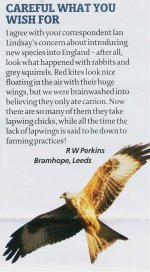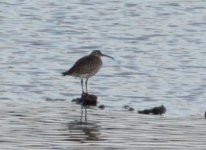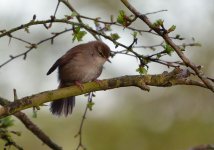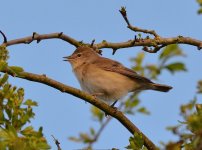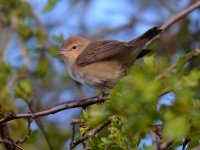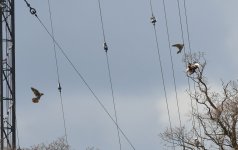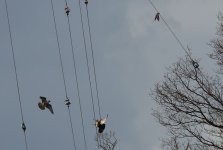Today at the reserve (MOORS)
Certainly today was an 'after the Lord Mayors show' day. I arrived to be greeted by a cold NW wind dropping the temperature by 10 degrees. I walked along the causeway, where sedge warblers was the most dominant song. A look over the Moors pool, revealed a year tick - with 5 swifts battling against the wind. A quick chat with Dave J, who told me he had seen the wood sand flyover from the Flashes heading north. I then staked out the 'secret garden', which was harbouring many warblers from the cold.
Between the swampy bottom and the secret garden were at least 6 singing sedge warblers. This species, up until recent years, always arrived in large numbers at this time of year. These were then followed a week or so later by reed warblers, which promptly ousted the sedge's from the best breeding sites. However the reed warblers now arrive earlier than they did a few years back, so large gatherings of sedge is less frequent. Across the whole reserve there were c20 sedges or more.
Anyway apart from sedges, the secret garden and its adjacent area held 3 whitethroats, 3 blackcap several chiffchaffs at least 2 singing willow warblers, reed warbler, cettis and the first GARDEN WARBLER of the year. Luckily Dave J and others managed to see it. It only gave a sub song and this when it was in sunshine. Onto the east track where willow warbler, chiffchaff, blackcaps, reed warblers and more sedges' sang, as well a redpolls.
From the East hide, most activity was in the 'scrape' and only the tufted , coot and hirundines ventured into the cold wind.
Species counts: GCG 4 (2 nests) little grebe 2, shoveler 5(pr + 3 male), gadwall pr, teal pr, shelduck male, tufted 38, Oystercatcher 5, common sand 3, lapwing pr, a whimbrel flew over heading north at 10.30ish, Arctic tern, buzzard, sparrowhawk, swift 5, green woodp, kingfisher,
c150 of all 3 hirundines mostly sand martin, sedge warbler 12 to 15, whitethroat 4, willow warbler 3, GARDEN WARBLER, redpoll 4,





